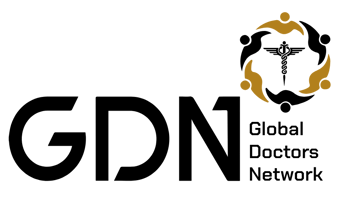
Assessments
In the UK, it is essential for all doctors to engage in regular assessments, with a minimum target of two per month. These evaluations serve to document continuous learning and the practical experience that doctors gain in their specific medical specialties. They are an integral part of the appraisal and revalidation process, which ensures that healthcare professionals stay informed about the latest practices and adhere to their professional scope. By participating in regular assessments, doctors contribute to maintaining high standards of patient care while also supporting their ongoing professional development.
Examples of Assessments
Case Based Discussions
Mini Clinical Examination
CBD
Mini-CEX
Direct Observation of Procedural Skills
DOPS
Acute Care Assessment Tool
ACAT
Extended Supervised Learning Event
ESLE
Outpatient Care Assessment Tool
OPCAT
Anaesthetic List Management Assessment Tool
ALMAT
Have you discussed a patient with your senior or consultant? If so, this assessment is for you! It can be used for any discussion, whether you are presenting a patient during a ward round or clinic or after clerking them at admission. Be sure to ask the consultant/senior colleague to complete it for you. The feedback you receive is valuable for your professional development and can help identify your strengths as well as areas for improvement in patient assessment and communication.
Have you examined a patient in front of a senior colleague/consultant? If so this is the assessment to use! These are used for any clinical examination where you have been observed directly. It can be harder to get these as you are likely to be examining the patient on your own before presenting the case but think about deteriorating patients or on a ward round if you have the opportunity. These can also be used for specific communication skills such as history taking, breaking bad news, managing difficult conversations etc.
Have you performed a procedure? Then use this form! Any procedure can be completed on this form from the basics of venepuncture to the more complex clinical procedures including chest drains, lumbar punctures and surgical procedures. Remember, a senior colleague must observe the procedure to complete the form, so be sure to ask for their presence and feedback before you begin. This documentation is crucial for your professional development and helps track your skills and progression in building confidence and your ability to perform independently.
This is a form to be able to show multiple competencies without having to complete multiple forms. Commonly used in acute medicine and emergency medicine, these are essentially 5 case based discussions in 1 form. They are often used after presenting cases during a post-take ward round.
These assessments are typically conducted at the registrar level rather than at the Senior House Officer (SHO) level. These assessments are designed to evaluate essential leadership competencies, including situational awareness, the management and supervision of junior staff, teamwork and collaboration, as well as decision-making abilities. During the assessment process, a consultant will observe your performance over several hours during your shift, providing invaluable feedback on your leadership and clinical skills. This comprehensive evaluation ensures that you are developing the necessary attributes to assume more senior responsibilities in your medical career.
Assessments are typically conducted within a outpatient clinic setting, either through direct observation by a senior colleague during the clinic or completed at the conclusion of the session. While there is no strict minimum number of patients to evaluate, it is advisable to include at least three patients to facilitate a meaningful assessment. This approach enables a comprehensive review of clinical skills, decision-making abilities, and patient management throughout the clinic session.
Used in anaesthetics to assess list management and demonstrate leadership capabilities in time management, decision making and situational awareness.
How to complete them?
Assessments generally follow a set format: they start with a clinical scenario, include a self-assessment and reflection, and end with supervisor feedback. Some assessments have separate sections for reflection and learning points, while others merge them.
Example
Clinical Case Tip: Be thorough but keep it unidentifiable
Young patient (30M) attended with chest pain, he described it as crushing in nature and radiating to his right shoulder. He was diaphoretic on arrival. He had been given sublingual GTN by the ambulance. His initial ECG showed widespread ST depression with T wave inversion.
Reflection (when it all goes well!)
I have seen many patients with chest pain and therefore found this case fairly easy to manage. I treated this patient for an acute coronary syndrome and alerted the cardiology team. I felt confident with the management of this patient and happy with the outcome. I would like to learn more specific features of occlusive myocardial infarction on ECGs and will complete some e-learning to complete this.
Reflection (when you found the situation more challenging!)
I found this case more difficult to manage. There were a wide range of differentials that I tried to rule in/out. I was aware that a cardiac pathology was more likely to be the cause of the patient’s symptoms. I was able to discuss this with my senior/supervisor and was able to formulate a management plan. I feel that I need to improve my confidence when seeing patients presenting with undifferentiated chest pain. An ECG is a common investigation where I need to improve my interpretation skills. I have therefore decided to attend a course on ECG interpretation to improve my knowledge and skills.
Entrustment Scales:
For many specialties the assessor will mark your ability to manage a scenario against a scale. Broadly, these are similar across all specialties although there may be slight changes between surgical and non-surgical specialties. Whilst in training programmes you will often need all learning outcomes to be rated at an independent level, usually Level 4.
Level 4
Would be able to manage with no supervisor involvement
Level 3
Indirect supervision with supervisor on call from home
Level 2
Indirect supervision with supervisor present in the department
Level 1
Direct observation required


